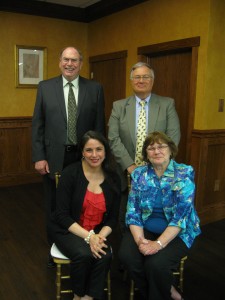 There aren’t any lions on any of NPC’s conservation easements. There may be some lambs from time to time, but I don’t have any photos. The best I can do for the first day of March is give you the Lyon’s Farm Conservation Easement.
There aren’t any lions on any of NPC’s conservation easements. There may be some lambs from time to time, but I don’t have any photos. The best I can do for the first day of March is give you the Lyon’s Farm Conservation Easement.
This conservation easement is in far eastern Lycoming County, almost Columbia County. In addition to the scenic beauty of the property, it also provides for groundwater re-charge, filters rain water with its riparian buffers, and its forests help filter air.
If you’ve never heard the March-Lion-Lamb folklore, here’s a poem by Joyce P. Hale that should explain it.
March – Lion and Lamb
by Joyce P. Hale
MARCH has tumbled on the scene,
exits mild, but enters mean…
Winter waves a fierce goodbye,
while robins promise Spring is nigh.
 Daffodils are peeking through…
Daffodils are peeking through…
forsythia is budding, too.
Clouds are racing, sun is cool,
in like a lion is the rule!
Birds all seem to know it’s time
to answer Mother Nature’s sign;
they listen to an innate command,
and there goes March, out like a lamb.










